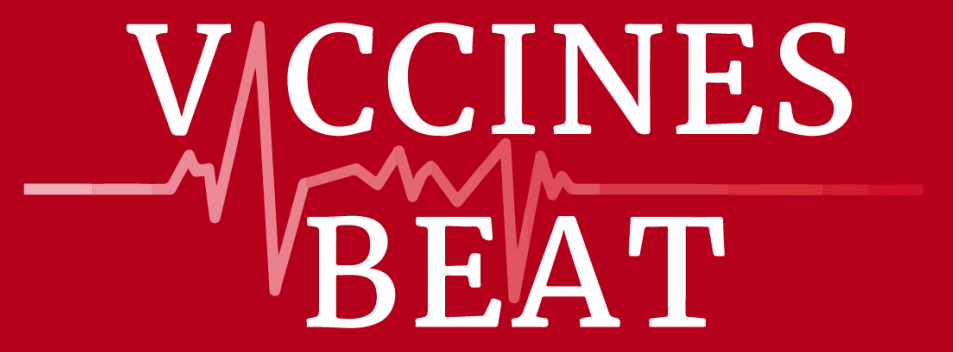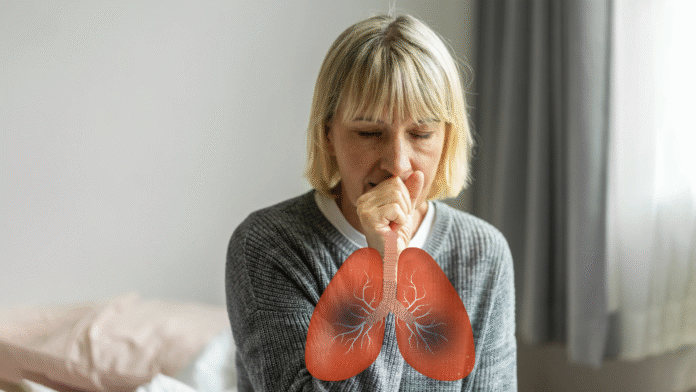Introduction:
Respiratory syncytial virus (RSV) is a leading cause of lower respiratory tract infections (LRTIs) and acute respiratory infections (ARIs), and poses a significant health threat, particularly to young children and older adults. RSV typically causes seasonal epidemics, with outbreaks generally occurring between October and May in the Northern Hemisphere and between May and September in the Southern Hemisphere. However, the timing and intensity of RSV epidemics can vary from year to year and across different geographic regions.
In healthy adults, RSV infection typically presents with mild, cold-like symptoms. However, in older adults and other vulnerable populations, it can lead to severe respiratory illness and acute cardiovascular complications. The U.S. Centers for Disease Control and Prevention (CDC) has identified several conditions that increase the risk of severe RSV disease in adults. These include cardiovascular disease, chronic respiratory disease, renal disease, diabetes, neuromuscular disorders, chronic liver and hematologic conditions, severe obesity, moderate to severe immunocompromise, and residence in nursing homes or remote/rural communities. While these general risk factors provide a useful framework, it is essential for individual countries to assess and identify context-specific risk factors relevant to their populations and healthcare systems.
According to data from the Global Burden of Disease study, an estimated 338,495 deaths were attributed to RSV infection worldwide in 2019—an increase from 76,000 in 2016. Notably, in 2019, the mortality rate among adults aged over 70 years exceeded that of children under 5 years of age. While targeted interventions in young children have significantly reduced RSV-related mortality in this age group over time, RSV has emerged as a growing threat to older adults and individuals with comorbidities. The disease burden of RSV in older adults is now comparable to that of influenza, with similar rates of hospitalization and mortality, underscoring the urgent need for effective prevention strategies in this population.
Definitive diagnosis of RSV infection can be achieved through several methods, including viral culture, antigen detection, serologic testing for acute infection, and molecular techniques. Among these, molecular methods are preferred due to their high sensitivity, high specificity, and rapid turnaround time—often yielding results within a few hours. Real-time polymerase chain reaction (RT-PCR), particularly “singleplex” assays, is considered the most sensitive and reliable diagnostic tool for detecting RSV in adults.
The primary approach to managing RSV infection is supportive care, which may include oxygen therapy, antipyretics, chest physiotherapy, and measures to prevent complications such as pressure ulcers. Although various antiviral agents have been investigated, no specific antiviral treatment for RSV has been approved for routine clinical use.
Prevention of RSV infection, vaccines:
RSV is primarily transmitted through direct contact with respiratory secretions from infected individuals and, to a lesser extent, via droplets and contaminated surfaces. Standard infection prevention measures—such as hand hygiene, mask use, eye protection, and patient isolation—are recommended to reduce the spread of RSV.
Two monoclonal antibodies are currently approved for passive immunoprophylaxis in children: palivizumab, for high-risk infants, and nirsevimab, for broader use in infants and young children. However, there is a lack of robust data on the efficacy and cost-effectiveness of passive immunoprophylaxis in adult populations, including the elderly and those with comorbidities.
Currently, approximately 30 RSV vaccine candidates are undergoing clinical trials globally, with over 30 additional candidates in preclinical development. To date, three vaccines have been approved for active immunization in adults: RSVPreF3, RSVpreF, and mRNA-1345.
The RSVPreF3 vaccine contains a recombinant RSV F glycoprotein stabilized in its prefusion conformation (PreF), combined with the AS01E adjuvant system. In contrast, RSVpreF is an adjuvant-free, bivalent vaccine that includes prefusion F proteins from both RSV subtypes A and B. While RSVPreF3 is not technically bivalent, clinical studies have shown it provides strong protection against both RSV A and B subtypes.
The mRNA-1345 vaccine is an unadjuvanted, mRNA-based formulation. It consists of lipid nanoparticles encapsulating a linear mRNA sequence that encodes the RSV prefusion F protein. Like RSVpreF, it offers protection against both RSV A and B subtypes.
The general characteristics of these vaccines are summarized in Table 1.
| Attribute | RSVPreF3 (Arexvy) | RSVpreF (Abrysvo®) | mRNA-1345 (mResvia™) |
| Manufacturer | GlaxoSmithKline Biologicals SA | Pfizer Inc. | ModernaTX, Inc |
| FDA Approval Date | 2023 | 2023 | 2024 |
| Adjuvant | AS01E adjuvant | None | None |
| Mechanism | Subunit (protein) based | Subunit (protein) based | mRNA based |
| Indication | • Individuals ≥60 years of age • Individuals 50–59 years at increased risk for RSV-LRTI | • Individuals ≥60 years of age • Individuals 18–59 years at increased risk for RSV-LRTI • Pregnant women at 32–36 weeks gestational age | • Individuals ≥60 years of age |
| Contraindication | History of severe allergic reaction (e.g., anaphylaxis) to any component of the vaccine | Same as RSVPreF3 | Same as RSVPreF3 |
| Administration | Single dose; 0.5 mL; intramuscular | Single dose; 0.5 mL; intramuscular | Single dose; 0.5 mL; intramuscular |
In all randomized, placebo-controlled clinical trials, the three approved RSV vaccines have demonstrated over 60% vaccine efficacy (VE) against all LRTIs compared to placebo, and over 90% efficacy against severe LRTIs.
In a recent systematic review, Ricco et al. noted that a pooled meta-analysis was not feasible due to follow-up data on the three approved RSV vaccines being collected during different seasonal periods. However, they provided cumulative vaccine efficacy (VE) estimates across seasons separately for each vaccine. The VE against LRTIs with ≥3 symptoms was estimated at 78.38% for RSVPreF3, 84.36% for RSVpreF, and 62.88% for mRNA-1345. For protection against RSV-related ARIs, the VE estimates were 67.73%, 52.42%, and 53.59%, respectively.
All studies have consistently confirmed a satisfactory safety profile for the RSV vaccines.
Moreover, RSV imposes a substantial economic burden, with hospitalization costs accounting for the majority of total expenses. In the United States, the annual direct medical cost associated with RSV-related hospitalizations in adults is estimated at approximately $1.3 billion US dollars.
A recent report assessed the socioeconomic value of adult immunization programs targeting four infections—influenza, pneumococcal disease, herpes zoster, and RSV—across 10 countries: Australia, Brazil, France, Germany, Italy, Japan, Poland, South Africa, Thailand, and the United States. The study found that cost-benefit analyses indicate these adult vaccines can deliver returns of up to 19 times the initial investment to society.
Table 2: Respiratory Syncytial Virus (RSV) Vaccination Recommendations in Adults (not including pregnancy) by Advisory Committees and Health Authorities Across Different Countries:
| Country | General Population (Age, years) | At Risk / Special Conditions (Age / Criteria) |
| USA | ≥75 | 60–74 / At increased risk for severe RSV disease |
| Canada | ≥75 | ≥60 / Residents of nursing homes & chronic care facilities 60–74 / Individual decision with provider consultation |
| UK | ≥75 | |
| Ireland | ≥65 | |
| Germany | ≥75 | |
| France | ≥75 | ≥65 / With chronic respiratory or heart conditions |
| Belgium | >60 | With ≥1 risk factor for severe RSV disease |
| Austria | ≥60 | ≥18 / With underlying medical conditions |
| Norway | ≥75 | ≥60 / With underlying medical conditions |
| Sweden | ≥75 | ≥60 / With certain underlying diseases |
| Switzerland | ≥75 | ≥60 / With increased risk of complications 18–59 / Individual decision with provider consultation |
| Poland | ≥60 | |
| Italy | ≥75 | ≥60 / With increased risk of complications |
| Greece | ≥75 | ≥60 / With concomitant medical conditions |
| Australia | ≥75 | ≥60 / Aboriginal & Torres Strait Islander people ≥60 / With risk factors for severe RSV disease |
| Saudi Arabia | ≥60 |
Conclusion:
RSV is a significant health concern not only in children but also in adults, particularly the elderly. With the increased use of advanced diagnostic methods, the true burden of RSV infections in older adults has become clearer through accumulating epidemiological data.
Preventing RSV infections in adults offers substantial benefits both at the individual and societal levels. Therefore, based on the latest scientific evidence and global practice recommendations, RSV vaccination should be incorporated into adult immunization programs as part of a comprehensive, lifelong vaccination strategy.
Bibliography:
- Tanriover MD, Azap A, Cakir Edis E, Ozger HS, Pullukcu H, Sonmezer MC, Dursun OU, Merter S, Sayiner A. Respiratory syncytial virus (RSV) infections in adults: Current trends and recommendations for prevention – a global challenge from a local perspective. Hum Vaccin Immunother. 2025 Dec;21(1):2514357. doi: 10.1080/21645515.2025.2514357.
- D’Ambrosio F, Lomazzi M, Moore M, Maida A, Ricciardi R, Munno L, Lettieri M, De Vito E, Ricciardi W, Calabrò GE. Addressing the Underestimated Burden of RSV in Older Adults in Europe: Epidemiology, Surveillance Gaps, and Public Health Implications. Vaccines (Basel). 2025 May 12;13(5):510. doi: 10.3390/vaccines13050510.
- Papi A, Ison MG, Langley JM, Lee DG, Leroux-Roels I, Martinon-Torres F, Schwarz TF, van Zyl-Smit RN, Campora L, Dezutter N, de Schrevel N, Fissette L, David MP, Van der Wielen M, Kostanyan L, Hulstrøm V; AReSVi-006 Study Group. Respiratory Syncytial Virus Prefusion F Protein Vaccine in Older Adults. N Engl J Med. 2023 Feb 16;388(7):595-608. doi: 10.1056/NEJMoa2209604.
- Ison MG, Papi A, Athan E, Feldman RG, Langley JM, Lee DG, Leroux-Roels I, Martinon-Torres F, Schwarz TF, van Zyl-Smit RN, Verheust C, Dezutter N, Gruselle O, Fissette L, David MP, Kostanyan L, Hulstrøm V, Olivier A, Van der Wielen M, Descamps D; AReSVi-006 Study Group. Efficacy and Safety of Respiratory Syncytial Virus (RSV) Prefusion F Protein Vaccine (RSVPreF3 OA) in Older Adults Over 2 RSV Seasons. Clin Infect Dis. 2024 Jun 14;78(6):1732-1744. doi: 10.1093/cid/ciae010.
- Walsh EE, Pérez Marc G, Zareba AM, Falsey AR, Jiang Q, Patton M, Polack FP, Llapur C, Doreski PA, Ilangovan K, Rämet M, Fukushima Y, Hussen N, Bont LJ, Cardona J, DeHaan E, Castillo Villa G, Ingilizova M, Eiras D, Mikati T, Shah RN, Schneider K, Cooper D, Koury K, Lino MM, Anderson AS, Jansen KU, Swanson KA, Gurtman A, Gruber WC, Schmoele-Thoma B; RENOIR Clinical Trial Group. Efficacy and Safety of a Bivalent RSV Prefusion F Vaccine in Older Adults. N Engl J Med. 2023 Apr 20;388(16):1465-1477. doi: 10.1056/NEJMoa2213836.
- Walsh EE, Pérez Marc G, Falsey AR, Jiang Q, Eiras D, Patton M, Polack FP, Llapur C, Doreski PA, Zareba AM, Ilangovan K, Rämet M, Fukushima Y, Hussen N, Bont LJ, Cardona J, DeHaan E, Mikati T, Shah RN, Schneider K, Cooper D, Koury K, Lino MM, Anderson AS, Jansen KU, Swanson KA, Gruber WC, Schmoele-Thoma B, Gurtman A. RENOIR Trial – RSVpreF Vaccine Efficacy over Two Seasons. N Engl J Med. 2024 Oct 17;391(15):1459-1460. doi: 10.1056/NEJMc2311560.
- Wilson E, Goswami J, Baqui AH, Doreski PA, Perez-Marc G, Zaman K, Monroy J, Duncan CJA, Ujiie M, Rämet M, Pérez-Breva L, Falsey AR, Walsh EE, Dhar R, Wilson L, Du J, Ghaswalla P, Kapoor A, Lan L, Mehta S, Mithani R, Panozzo CA, Simorellis AK, Kuter BJ, Schödel F, Huang W, Reuter C, Slobod K, Stoszek SK, Shaw CA, Miller JM, Das R, Chen GL; ConquerRSV Study Group. Efficacy and Safety of an mRNA-Based RSV PreF Vaccine in Older Adults. N Engl J Med. 2023 Dec 14;389(24):2233-2244. doi: 10.1056/NEJMoa2307079.
- Riccò M, Cascio A, Corrado S, Bottazzoli M, Marchesi F, Gili R, Giuri PG, Gori D, Manzoni P. Efficacy of Respiratory Syncytial Virus Vaccination to Prevent Lower Respiratory Tract Illness in Older Adults: A Systematic Review and Meta-Analysis of Randomized Controlled Trials. Vaccines (Basel). 2024 May 5;12(5):500. doi: 10.3390/vaccines12050500.
- Office of Health Economics (OHE). Contract Research Report. The Socio-Economic Values of Adult Immunisation Programmes, April 2024. Last accessed August 15, 2025. chrome-extension://efaidnbmnnnibpcajpcglclefindmkaj/https://www.ohe.org/wp-content/uploads/2024/04/Socio-Economic-Value-of-Adult-Immunisation.pdf.
- CDC-RSV Vaccine Guidance for Adults, July 8, 2025. Last accessed August 15, 2025. https://www.cdc.gov/rsv/hcp/vaccine-clinical-guidance/adults.html.
- Duan Y, Liu Z, Zang N, Cong B, Shi Y, Xu L, Jiang M, Wang P, Zou J, Zhang H, Feng Z, Feng L, Ren L, Liu E, Li Y, Zhang Y, Xie Z. Landscape of respiratory syncytial virus. Chin Med J (Engl). 2024 Dec 20;137(24):2953-2978. doi: 10.1097/CM9.0000000000003354.







